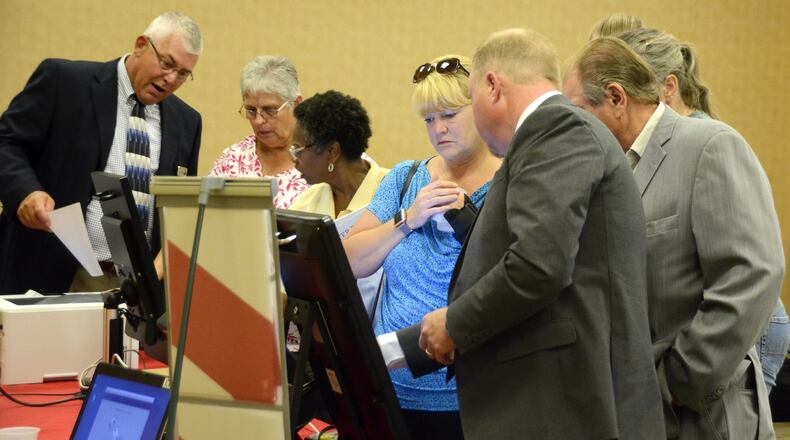“We’re all in a waiting position to see if the state is going to work with the vendors to get pricing,” she said.
RELATED: Paper ballots may be coming to Butler County
Anything over the $3.2 million state share is on county taxpayer’s dime, and the county commissioners have the final say on purchases like this.
Butler County Commissioner Don Dixon said while “we don’t drive Cadillacs in Butler County” — referring to the top end of the price estimate — the elected board will make sure the new equipment will be top shelf in terms of voting accuracy.
“First we’re going to make sure the election is safe and correct,” he said. “Whatever it takes to make that occur we’re going to do but we’re going to get the best we can for the least amount of money… If we have to put some money into it, we will, I suspect we will have to, but not until after we’ve exhausted every revenue stream that’s available to us.”
Voters here have been using direct-recording electronic voting machines, or DREs, which requires the use of a touchscreen. Many counties are talking about switching over to paper ballots because the new DREs are not yet state-certified.
Noonan said “certification” means the state is still testing the new evolution of DREs, and she prefers to stay with the tried and true.
“My preference definitely is the DREs, but I don’t know if they are monetarily affordable,” she said. “We prefer staying where we’re at, rather than going back to paper.”
The state funding is being allocated based on how many registered voters a county has.
The county is in the middle of preparing its spending plan for next year.
MORE: Some Butler County agencies testing cheaper emergency radios
Unexpected monetary pressures have been at a minimum so far this year, with the exception of a larger than expected health insurance increase of possibly 12 percent to 15 percent. Butler County Administrator Charlie Young said he doesn’t know yet what voting machine price might have a negative impact on the general fund.
“I don’t have a target number to say we can do this or we can do that,” Young said. “We’re going to be working with the Board of Elections and considering the needs of our citizens to come up with a voting system that everybody has confidence in.”
State law currently requires one voting machine per 175 registered voters. There are 241,388 voters registered in Butler County, so 1,379 machines are required. The Board of Elections has about 1,600 machines — extras are needed to swap out malfunctioning or replace broken machines.
According to the County Commissioners Association of Ohio, the state is taking out a short-term loan to pay for the machines, but maintenance of and insurance for the equipment will all come out of county coffers.
Butler County Commissioner T.C. Rogers and his fellow commissioners often lament unfunded mandates from the state, and he said this could be considered one of them, because the state has “directives” regarding the new voting systems and the cost isn’t fully covered.
“This was a percentage of the cost but it does not take into account the maintenance of the software and the machines…,” Rogers said. “$3.2 (million) is fine, but we’d like it all paid for.”
Ohio purchased most of the current voting machines in 2005 and 2006 with nearly $115 million in federal Help America Vote Act (HAVA) money. HAVA passed after the 2000 presidential election exposed a critical need for upgrades.
About the Author
